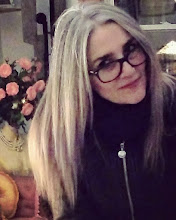SUZANNE O'CALAGHAN
"Great George Street, Chalottetown, PE"
acrylic on wood panel, museum framed
sold/private collector/Vancouver, BC
all rights reserved
SUZANNE O’CALLAGHAN ARTIST’S STATEMENT IN RED
Throughout art history women artists have struggled not only to balance their work with their domestic and familial roles and duties but also, for upwards of two-thousand years, with the very legality of artistic study and, to this day, the opportunity to disseminate and present so-called “women’s work”.
I am one of these women.
For four decades, interrupted frequently, I have been an artist, arts advocate, author and arts educator. I am also a mother, daughter, sister and friend.
Juxtaposed between the rigours and trials of working as a visual artist are the elements I would call “human salvage”. Within these elements live the emotional impressionist portrayals of colour, tonality, light and texture wherein lie the notable and occasionally and most often accidentally profound elements of my work: those elements that truly and honestly reflect my person, experience and dictum as a Canadian woman artist.
A central assertion of my practice is the fact that we all, as human beings, share more in common than we know differences. The daily redux of my artistic sense and sensibility on canvas strives to express this and all my beliefs and, even amid despair and disturbing subject matter, (i.e. loneliness, grief, etc.), to metaphorically and literally lift and excite my viewer’s heart and mind, beginning with colour. This remains an integral part of my objective and ambition.
The proverb, “she fears not the snows for her home is clothed in scarlet” (31:21) is substantive to the beginnings and to the completion of every piece I create and to my practice in general for the following reason (s).
Red is one of the seven colours of the spectrum. It is also the colour of blood and of the field poppy. Red narrates, red highlights, red beautifies, red embellishes, red accentuates, red loves and red kills, too – but it is not the colour of mourning. And yet, for me, as was true for artists like Eva Gonzales and Henri de Toulouse-Lautrec, red is far from anodyne.
Red and the intentional heat of my palette, provide me a means of imparting brilliance and ebullience, but also the opportunity of creating tension and even doing a kind of violence to the chromatic harmony within my work.
I believe that women impressionists understood this (and so much more) about the use of colour (and hue), tonality and light, particularly as they relate to the purpose of evoking all manner of emotion and to the very personal and unique conveyance, manoeuver and cynosure of subject – as I strive to do within my own practice.
My childhood and youth were spent, without choice, as was true for all children of my generation, in the study of the art of men and little else relative to art history (ref. the 1960 Jensen’s Encyclopedia of Art, which had 1235 entries in it and not a single female artist). The result of this ‘education’ for me today includes the quest, the hunger, to stir not only an appreciation for and more vibrant interest in women’s art, but to participate in exalting to its rightful place – both as regards the work of my female predecessors and that of myself and my contemporary female colleagues: not simply adding onto an old art history but participating in a continuing visual conversation that will result in the documentation, one day, of an art history never fully realized.
The 19th century art world was dominated by male critics, jurors, art dealers, and collectors, but there were far more professional women artists than is generally assumed, despite the difficult conditions under which women then, and now, had to live and work.
Arts scholar and author Tamar Garb, among others, has overtly attributed the “impressionist” style to that of the woman artist in as much as it is an identifiable female expression, even virtue, in paint: the liberal brush strokes, the use of white, light and bright surfaces, the porosity of the execution and, of course, the “impression” of a subject and/or moment in time.
My eventually becoming as a contemporary post-impressionist/expressionist influenced and self-taught painter came through two primary and uncontrollable, even undesirable, circumstances: my gender and my failing vision. Today, I am deeply, profoundly, grateful for both.
Writing a current artist’s statement cannot but mean touching on social history as well as current social reality as both impact the lives of my sister artists, gone and present. Every life led by an artist is a pioneer’s life in a sense: a life of uncertainty, exploration, newness, learning, creative thought, loneliness, isolation and sometimes astonishing faith in the importance of simply continuing to make art well past any logical reason(s) for so doing.
Marie-Pauline Berthe Morisot (January 14, 1841-March 2, 1895) once wrote to her sister, Edma, “work, for me, is the sole purpose of my existence… Inactivity prolonged indefinitely would be fatal for me in every way.”
This is my truth as well. Without my work as a painter my life not only lacks balance, it lacks truth. This work feeds and supports the other parts of me, which are of course fed by other means, body, spirit, et al.
The dignity and self-respect of the woman artist lies not only in our absolute need to make work and earn a respectable living from it, but in the ability, the courage, the daring, the creativity that lives in the heart of the woman who is willing to live a life of red, replete with vanitas as well as the pursuit of virtue.
This is my purpose, my statement, as a woman artist.
Suzanne O’Callaghan (Miss)
(Ni Ceallachain)
*first drafted 10/2010; rewritten 04/2013
SUZANNE O'CALLAGHAN
"The Climacteric"
acrylic on wood panel in vintage gilded frame
sold/private collector/Canada
all rights reserved


